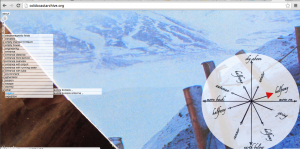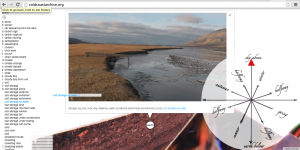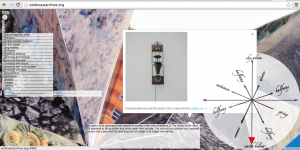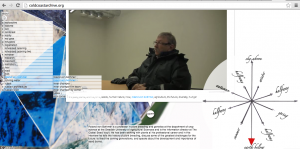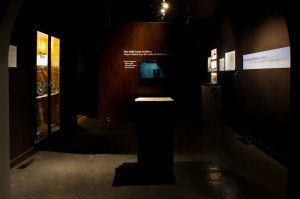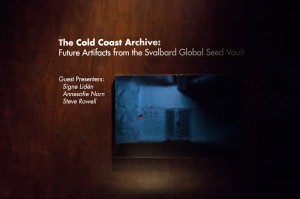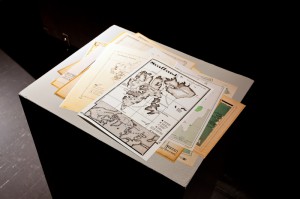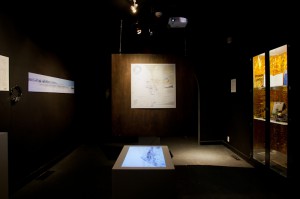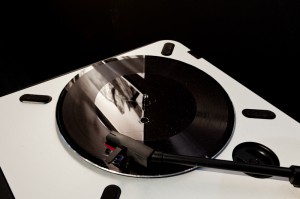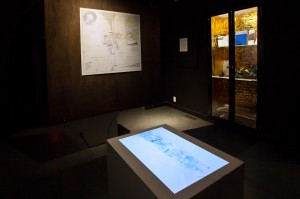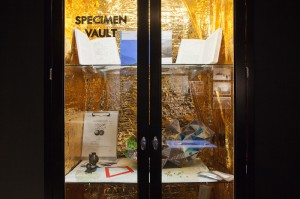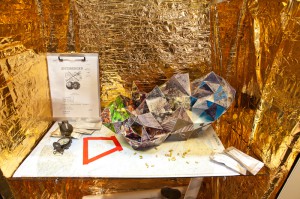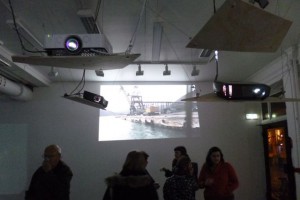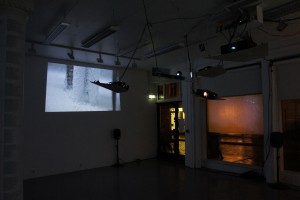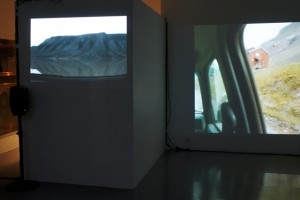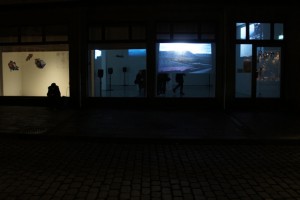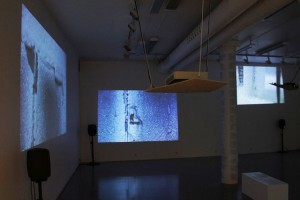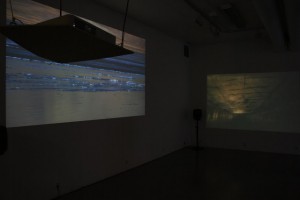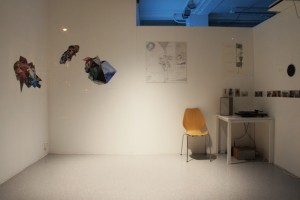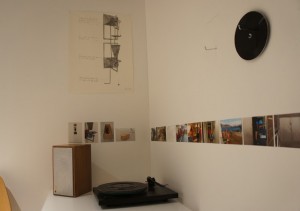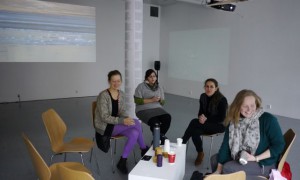The Cold Coast Archive is a joint project between artists Annesofie Norn, Signe Lidén and Steve Rowell using the Svalbard Global Seed Vault as a focal point.
The Svalbard Global Seed Vault is located on the outskirts of the remote, arctic town of Longyearbyen, on the island of Spitsbergen, in the Svalbard archipelago, halfway between the North Pole and Norway. The seeds stored here are duplicate samples held in seed banks worldwide — they provide insurance against extinction in the case of large scale regional or global catastrophes. The facility is about 130 meters above sea level and has been tunnelled 120 meters into the mountain, in a stable geologic formation. The location is built to be so far below ground that it guarantees stable permafrost and is high enough above sea level to secure the facility against any rise in sea level as a result of global warming, nuclear attack, and earth quakes.
The Cold Coast Archive project investigates and explores human beings’ efforts to preserve civilisation and defy the inevitability of its demise. It investigates Svalbards Global Seed Vaults practical, political, historical and symbolic structure, its arctic location, as well as its infrastructure and cultural nuances expressed in the local environment. The wide range of material collected is meant to form an archive of human perception of time between the present and eternity.
Eternity…this intangible future for which religious vocabulary seems to have gotten a monopoly. There is a gap between the present and eternity, a distance we often call “future generations” or “our children and grandchildren” in an attempt to relate to the distant future. This gap that might seem to be gnawed on by desires for quick profit and short term results, accelerated by technology and market-driven economies. It is the distance between an intense present, with major political, social and climatic challenges and an elusive future hiding beyond the horizon of our understanding that The Cold Coast Archive is relating to.
The project is supported by Norwegian Art Council, Nordic Fund and Nordic Culture Point. Many thanks to BEK, Tom fra Statsbygg and Roland von Bothmer.
Screen shots from the website:
The website:
The principle of triangulation is applied as the formal structure of the Island. Printed photos from Svalbard is imposing a combinational structure of triangles as a continuous domain. Thus the island is forming the physical and metaphorical drawings of the islands structure.
he photos are sorted into season and latitude groups, with a liquid transition between each.
Moving through the Island you travel through time and geographical space. Horizontally from spring to summer over autumn. Vertically you travel from below through the matter of earth and dirt, the geological past and above into the Now of Longyearbyen and a human timescale of everyday life.
Thus we have collected a vast amount of material which is often interrelated directly through thematic, sometimes just by a few words, sometimes by the visual structure or quality of the material, the person involved or the concrete geographical location appearing over the seasons. We hope that this site will enable the spectator to experience the content in a way that a sense of time, space and synchronicity will be an apparent part of the cognition.
The Cold Coast Archive Exhibitions:
Center for PostNatural History, Pittsburgh, May 15th – August 15th, 2012
(All documentation photos above from CPNH are captured by Steve Rowell)
Rom 8, Bergen 16. -25- November 2012:
The exhibition at Rom 8 consisted of six projectors
and six speakers, displaying a “curated” travel
through video, field recordings and interviews
from The Cold Coast (online) Archive. In a separate
room with window towards the street, the records
from Evigaturen played, maps and other CCA artefacts
were displayed. The photo to the left is from a replace
talk during the exhibition period.
